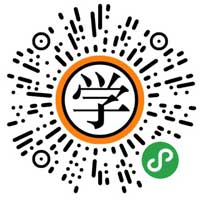2010年2月欧洲宏观经济研究报告
发布时间:
来源:人大经济论坛
【出版时间及名称】:2010年2月欧洲宏观经济研究报告
【作者】:汇丰银行
【文件格式】:pdf
【页数】:27
【目录或简介】:
Who has a say on what in the EU?
Where does the money come from?
Key statistics on EU and member states
Ever wondered whether EC stands for European Commission,
European Council or European Cheque Card? With European
sovereign debt under pressure, questions on the functioning of
the EU have been on the rise. We explain the interaction of EU
institutions and provide a cheat sheet on this page.
Council of the European Union
This is where most decisions are taken! It’s the most important
body and crisis discussions take place here, for example bank
rescue packages or sovereign debt issues. It’s called …
Eurogroup: An informal meeting of Eurozone Finance
Ministers which prepares Eurozone decisions for the Ecofin.
European Commission: The Commission has no decision or
legislative power. It has an advisory and enforcement function.
European Parliament: Does not have the same weight as
national parliaments, but has limited power to pass EU laws.
European Union Budget: Small, not used to finance national
fiscal positions and more a tool of redistribution within the EU.
EU Bond: Not used to finance ordinary budgetary expenses.
Mostly to finance assistance of non-eurozone EU states, and not
for eurozone states.
European Investment Bank (EIB): For the financing of
investment projects, not fiscal budgets.
There is no designated mechanism to help out a Eurozone
economy with fiscal difficulties!
【作者】:汇丰银行
【文件格式】:pdf
【页数】:27
【目录或简介】:
Who has a say on what in the EU?
Where does the money come from?
Key statistics on EU and member states
Ever wondered whether EC stands for European Commission,
European Council or European Cheque Card? With European
sovereign debt under pressure, questions on the functioning of
the EU have been on the rise. We explain the interaction of EU
institutions and provide a cheat sheet on this page.
Council of the European Union
This is where most decisions are taken! It’s the most important
body and crisis discussions take place here, for example bank
rescue packages or sovereign debt issues. It’s called …
Eurogroup: An informal meeting of Eurozone Finance
Ministers which prepares Eurozone decisions for the Ecofin.
European Commission: The Commission has no decision or
legislative power. It has an advisory and enforcement function.
European Parliament: Does not have the same weight as
national parliaments, but has limited power to pass EU laws.
European Union Budget: Small, not used to finance national
fiscal positions and more a tool of redistribution within the EU.
EU Bond: Not used to finance ordinary budgetary expenses.
Mostly to finance assistance of non-eurozone EU states, and not
for eurozone states.
European Investment Bank (EIB): For the financing of
investment projects, not fiscal budgets.
There is no designated mechanism to help out a Eurozone
economy with fiscal difficulties!
经管之家“学道会”小程序
- 扫码加入“考研学习笔记群”

推荐阅读
经管之家精彩文章推荐


